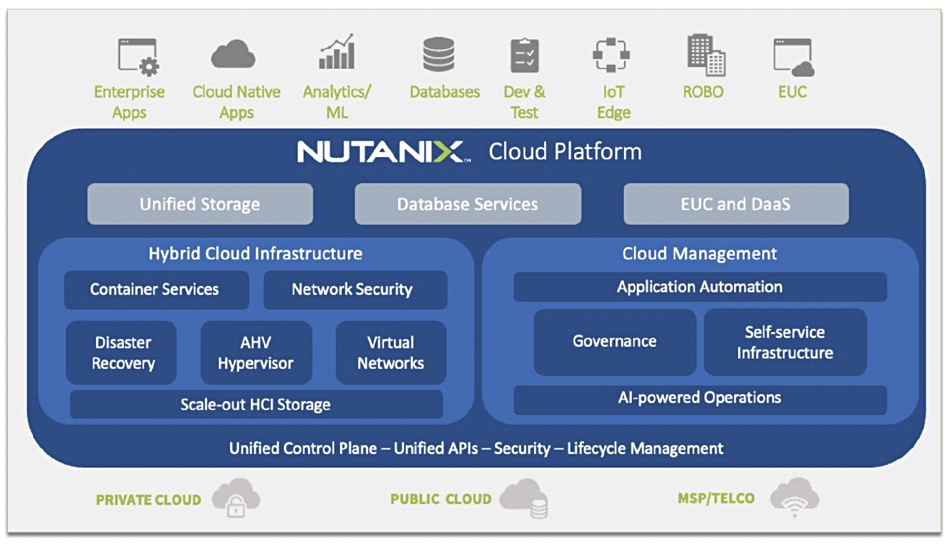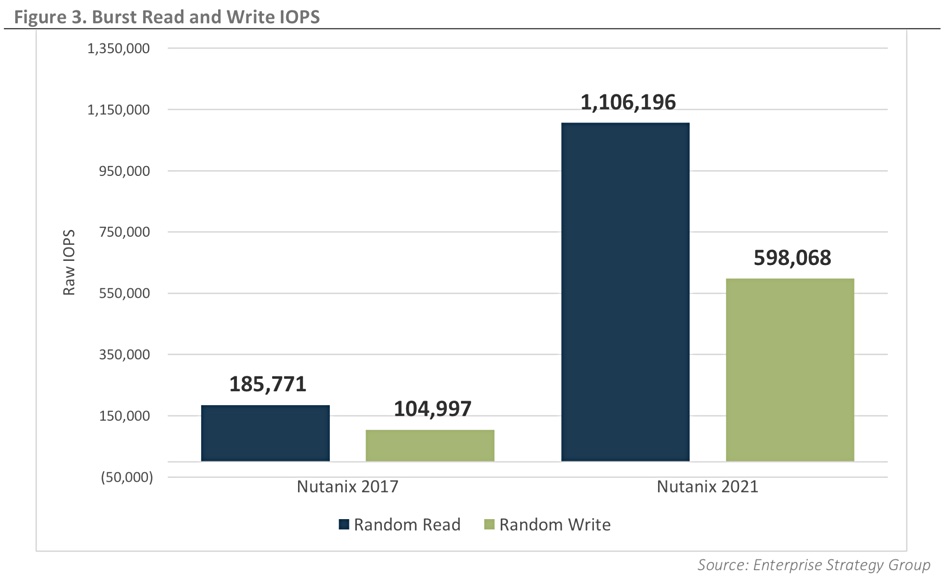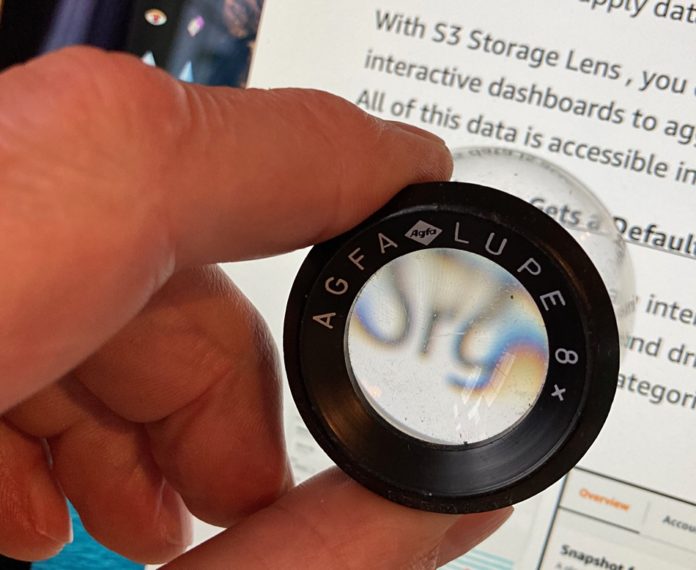Nutanix customers received a great raft of incremental improvements at the company’s .NEXT event, with virtual private clouds in AOS, better disaster recovery and security. Nutanix’s Cloud Platform has faster database and big data processing, unstructured data tiering and governance, and enhanced database scaling and access control in Era.
The general aim seems to be to have Nutanix admins just do more outside the core Nutanix HCI functions so that third-party purchases of disaster recovery products or services and dedicated VPN hardware is no longer necessary, saving the customers money and simplifying their operations.

Rajiv Mirani, Nutanix CTO, said: “The Nutanix Cloud Platform continues to break down common silos within IT teams with the goals of simplifying operations so customers can focus on business needs. With these new features, we focused on addressing the common challenges many enterprises face in hybrid multi-cloud environments, including security, DR and virtual networking.”
AOS, Nutanix’s HCI software, gets a major release, v6, which includes a virtualised network offering called Flow Networking. This enables the creation of Virtual Private Clouds (VPC) and Virtual Private Networking (VPN) to bridge and extend customers’ virtual networks to any public and private cloud infrastructure. There is no requirement for dedicated physical appliances or complex configuration exercises with these VPCs and VPNs, and, Nutanix says, minimal dependency on hardware switches and routers.
Disaster recovery and security
Nutanix says business continuity and DR facilities built into AOS v6 include:
- Using the public cloud as a secondary site;
- Native metro clustering support for the AHV hypervisor enabling automatic failover in the event of a disaster;
- End-to-end encryption capabilities for DR traffic;
- New DR dashboard to provide a comprehensive view into customers’ DR configuration and status across primary and secondary sites.
The company is boosting security by adding zero trust features. Its Flow Security Central SaaS platform is getting the automatic creation of “Flow microsegmentation policies through a machine learning-based planning engine that analyses an organisation’s network traffic and recommends security policies to protect virtual-machine workloads against potential attacks.”
Nutanix specifically says that these features “eliminate specialised DR hardware and software, reduce licensing costs, improve recovery time, simplify … operations, and potentially eliminate expensive hot-standby secondary sites. [It] enables mid-size companies that might not have had the budget or skills to implement robust DR capabilities to better protect their businesses from disasters.”

In February Flow Security Central gained machine learning and IP reputation services to identify known attack vectors, including potential ransomware, at the network level. Machine learning is playing a larger and larger role in Nutanix’s security thinking.
The Nutanix Cloud Platform will get integrated with Qualys’s industry vulnerability management detection and response (VMDR) software so customers can streamline security patching efforts with virtual machine-centric threat detection and vulnerability risk visualisation capabilities.
Better protection in Nutanix Files will help detect 4000+ known ransomware attack signatures with the ability to deliver new signatures dynamically, and so prevent attacks. Nutanix AOS, AHV, and Files products are now approved for placement on the Department of Defense Information Network Approved Products List (APL) after completing cybersecurity and interoperability testing.
Faster database and big data processing
Nutanix’s cloud platform software will deliver an up to 2x storage performance increase for database workloads and 3x for big data workloads without, it says, requiring complex reconfiguration. It says an ESG report it commissions explains this and it can be downloaded from here.
The document says Nutanix’s software has a new blockstore and uses Intel’s [open- source] SPDK (Storage Performance Development Kit) technology with an NVMe driver and support for Optane SSDs with data tiering, so hot data is stored on the fastest media.
A new data sharding architecture, with a change from single-threaded to multi-threaded operation, helps migrate large-scale databases to the Nutanix environment. It also speeds SQL Server read performance. Support for replication factor 1 (RF1), as well as the default RF2, delivers, the report says, enhanced TCO and performance for big data analytics apps that mange their own resiliency.
The ESG testers found that a 2021 all-flash four-node Nutanix cluster delivered more than 1.1 million random read IOPS and almost 600,000 random write IOPS — a 5.95x random read performance improvement and a 5.7x random write performance improvement over an equivalent Nutanix Cluster using 2017 Nutanix software.

ESG tested SQL Server OLTP performance between the same two systems and recorded a 172 per cent improvement in transactions/sec (TPS), a 64 per cent average response time improvement, 60 per cent shorter average read latency and 42 per cent better average write latency.

There were improvements from the 2020 version of Nutanix’s software and the latest version — ten per cent higher TPS, eight per cent lower average response time, 36 per cent lower average read latency and 43 per cent lower write latency.
Testing of Oracle using SLOB showed similar improvements to SQL Server. Testing of big data workloads such as Cloudera, Hadoop and Splunk all showed performance improvements. The new replication factor storage mode in the Nutanix platform results in up to 3x faster data processing while reducing costs. Read the ESG report for the details.
Turning to data lakes, customers working with modern analytics applications, such as Apache Spark, will benefit from dramatically increased query and large batch processing performance with S3 Select and optimised S3A support in Nutanix Objects.
Era database scaling
The Era database management facility can now scale the storage for databases like PostgreSQL, MySQL, Microsoft SQL Server, and Oracle online. Nutanix claims this turns days or weeks of work into a one-click operation.
Customers can also implement security and compliance policies through support for role-based access control (RBAC) as well as securely share access to databases and database management operations.
Era also now supports multi-region failover capabilities, meaning increased resilience through a high availability database-as-a-service capability.
Data Lens for data governance
Data Lens is a new cloud service designed to manage unstructured data growth and help protect data against security risks. It provides a global view with insights into unstructured data stored on Nutanix unified storage 一 whether on-premises or in the public cloud 一 including access patterns, data age, data types and more. This means it can simplify data lifecycle management tasks as well as protect against ransomware attacks by detecting and blocking suspicious files and alerting on anomalous activity.
Nutanix has added native support for data tiering to Nutanix Objects, AWS S3, and Azure blob storage, as well as managing disaster recovery for file shares on Nutanix Files with 1-min Recovery Point Objective (RPO) and self-service restore.
Availability
Virtual networking and the disaster recovery features are currently available to customers while security improvements are still under development. New features in Nutanix Era are currently available to customers. Expanded support for database and big data applications in the Nutanix Cloud Platform, and unstructured data management features, are currently under development.








